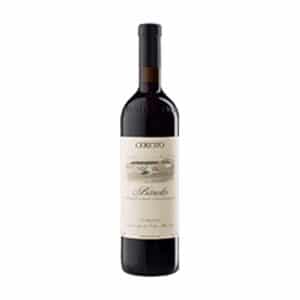Ceretto Aziende Vitivinicole
Country: Italy
Region: Piedmont
Ceretto is a third -generation family wine enterprise that was founded more than 70 years ago in the Langhe region of Piedmonte, Italy. It has built up its impressive international reputation and was a pioneer in introducing the concept of cru- wines made from specific vineyards chosen for their enduring excellence.
History of the Domaine
Founded by Riccardo Ceretto in the 1930s, the domaine’s turning-point came in the sixties, when control was handed to the second generation, brothers Bruno and Marcello. Inspired by a trip to Burgundy, the brothers focused on the concept of terroir, a revolutionary approach for the region, and set about identifying the finest crus of Barolo and Barbaresco.
In a little more than thirty years, the Ceretto brothers created a network of small independent estates in the Langhe and Roero, purchasing over 120 hectares of land to form a constellation of wineries producing outstanding labels such as the Bricco Rocche Barolos, the Bricco Asili Barbarescos, Blangé Arneis, Moscato from Vignaioli di Santo Stefano, Dolcetto, Barbera, Langhe Monsordo and grappas.
Not content with just improving the quality of their wines, the brothers also focussed on developing the cultural interests of the family company. They brought in famous designers and architects to develop their winery sites, produced labels that are works of graphic art, and supported book prizes and musical events in the surrounds of Alba, all because of their belief that wine is, above all, culture.
In 1999, the next generation joined the family business. Drawing on the craft and temperament, and the aptitude and skills of their fathers, this new generation of Cerettos are demonstrating that tradition also means transition, looking to the future, whilst continuing along the path laid down by their parents.
Viticulture and Winemaking
In the vineyard Alessandro Ceretto has been shifting to organic and biodynamic practices, paying much more attention to the soil and establishing a mother vineyard using selection massale propagating only the best vines. In the winery experimentation has been constant, only now do they seem to be settling on some basic practices. Skin contact has gone from long to short and now sits in the middle. Oak use lifted to 100% new oak and then dropped to half to a third gradually decreasing to around 10% by 2012 with Botti coming back into the picture from 2010.
The Wineries and Vineyards
Barolo – Bricco Rocche
A painstakingly long search led to the selection of four vineyards in the Barolo wine-growing area. At their center lies the winery in Castiglione Falletto. Designed by Turin architects De Abate according to modern criteria, it was built to meet every functional requirement whilst blending into the surrounding landscape.
Only Barolo is produced here, from the grapes grown on the 11 hectares of estate-owned vines situated in the villages of La Morra (Brunate), Serralunga (Prapò), Castiglione Falletto (Bricco Rocche) and Barolo (Cannubi), for an annual production of just 40 000 bottles.
Barbaresco – Bricco Asili
A small winery, one of the few examples in Piedmont within a vineyard, Bricco Asili was the first Ceretto estate, opened in 1973 and still at the top today in the production of Barbaresco.
It is a place of experimentation, though traditions continue to be treated with the greatest respect. A prime example is the pioneering adoption in the early seventies of steel tanks for processing the grapes, guaranteeing the utmost cleanliness and perfect temperature control.
The farm works around 15 acres of vineyards divided between two crus – Bricco Asili and Bernardot – for an annual ‘low volume – high quality’ production of around 20 000 bottles.
Langhe – Monsordo Bernardina
The Monsordo-Bernardina project is the embodiment of the Ceretto spirit, which is always hovering between tradition and innovation. A historic farmstead has been transformed into the state-of-the-art headquarters of the business.
Since 1987, this estate on the outskirts of Alba has been the nerve center where the company’s financial and commercial operations and offices are concentrated, along with the warehouse which brings together all the wines from the various estates.
Some of the firm’s historic labels are also produced here: Arneis Blangé, Arbarei, Monsordo, Dolcetto Rossana, Barbera Piana, Nebbiolo Bernardina, Barbaresco Asij, Barolo Zonchera and Barolo Chinato.
Asti – Vignaioli di Santo Stefano
With an almost metaphorical return to their origins, in 1976 the Ceretto brothers – together with two partners (Sergio Santi and the brothers Gianpiero and Andrea Scavino) – founded I Vignaioli di Santo Stefano in the village where their father, Riccardo, was born.
The farm works 20 acres of its own land, as well as the prestigious leased San Maurizio estate, producing Asti and Moscato d’Asti.


